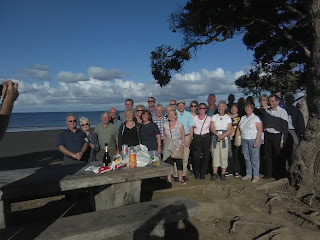Scandinavian Discovery - Stockholm Sweden 18/7
Sunday 18th July
Stockholm, Sweden
Drottningholm Palace - History
Drottningholm Palace has been the home of The Royal Family since 1981.
The name Drottningholm (literally "Queen's Island") originated in the late 16th century, when King Johan III built the first Palace on this site, for his Consort, Queen Katarina Jagellonika. The 16th century Palace was destroyed by fire on 30th December 1661. Earlier that year the Queen Dowager, Hedvig Eleonora, had bought the Palace.
Nikodemus Tessin the Elder
After the fire, the architect Nikodemus Tessin the Elder was commissioned by the Queen Dowager to design a new building, and in 1662 work began on the Palace, as we know it today.
After the fire, the architect Nikodemus Tessin the Elder was commissioned by the Queen Dowager to design a new building, and in 1662 work began on the Palace, as we know it today.
At the time, Hedvig Eleonora headed the Regency for the young King Karl XI.
The Peace of Westphalia in 1648 had made Sweden one of the most powerful states in Europe, and, according to the contemporary way of looking at things, the Queen, as head of the Government of Sweden, had to be provided with a suitably impressive residence at a convenient distance from the capital.
French Baroque
The Palace was also given an exclusive French Baroque park, large parts of which have been preserved.
The Palace was also given an exclusive French Baroque park, large parts of which have been preserved.
The bronze sculptures in the park are by Adrian de Vries, one of the most eminent sculptors of the Northern European Renaissance.
The collection came to Sweden as booty from Prague and from Fredriksborg Palace in Denmark.
Interiors
Nicodemus Tessin the Elder created a number of interiors, which rank among the foremost in Sweden from the early Baroque of the 1660s and 1670s.
They include the staircase, the Ehrenstrahl Drawing Room and, not least, Hedvig Eleonora's State Bedchamber.
Following the death of Tessin the Elder in 1682, his son Nicodemus Tessin the Younger carried on and completed the great project. Karl XI's gallery, for example, dates from this period.
Residence of the royal ladies
Drottningholm remained the residence of the royal ladies, and in 1744 it was given as a wedding present to Princess Lovisa Ulrika of Prussia, on her marriage to the Swedish heir apparent, Adolf Fredrik.
Lovisa Ulrika's time at Drottningholm became a golden age of the arts. Some of the interiors of the Palace – Lovisa Ulrika's Green Antechamber, for example – were redecorated in a French-inspired Rococo style.
Carl von Linné
Many of the leading scientists of the age gathered at Drottningholm. Carl von Linné (Linnaeus) worked here, cataloguing the royal collections' "natural objects".
Many of the leading scientists of the age gathered at Drottningholm. Carl von Linné (Linnaeus) worked here, cataloguing the royal collections' "natural objects".
Lovisa Ulrika's library stands out as a brilliant memento of the period, which also saw the creation of the famous Drottningholm Court Theatre.
The great romantic "English Park"
Drottningholm was purchased by the State in 1777, becoming the home of Gustav III. The great romantic "English Park" still surrounding the Baroque Palace and the French formal garden was created at this time.
Drottningholm was purchased by the State in 1777, becoming the home of Gustav III. The great romantic "English Park" still surrounding the Baroque Palace and the French formal garden was created at this time.
Steninge Palace
Steninge Palace was completed in 1705 and has been named Sweden’s finest Baroque Palace.
The palace is located overlooking Mälaren, Sweden’s largest lake, and is southwest of Sigtuna, Sweden’s oldest town. Steninge’s history dates back to the 13th Century.
However, Steninge Palace’s most noteworthy owners were the noble families Gyllenstierna (1649-1735) and von Fersen (1736-1839). Most notable was Axel von Fersen, who was infamous for his love affair with the French Queen Marie Antoinett.
The Journey
A short drive to join our lake cruise to Drottningholm (1hr) on arrival a short walk to the Palace Theatre for a guided tour (45 min), then to the Palace (self guided) time for lunch and a look at the gardens. After lunch we shall drive to Steninge Palace, a short walk (10 min) and then a guided tour inside, (45 mins).


Comments
Post a Comment